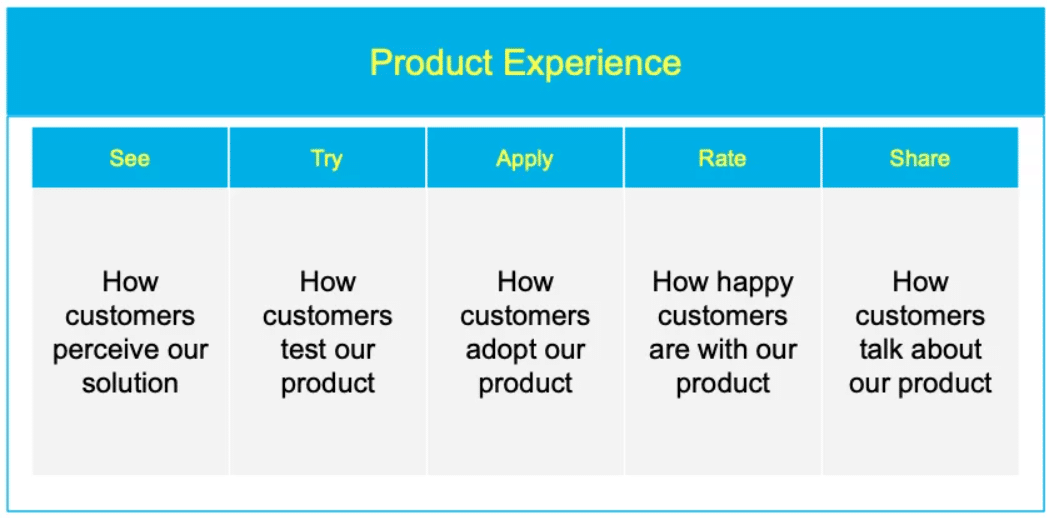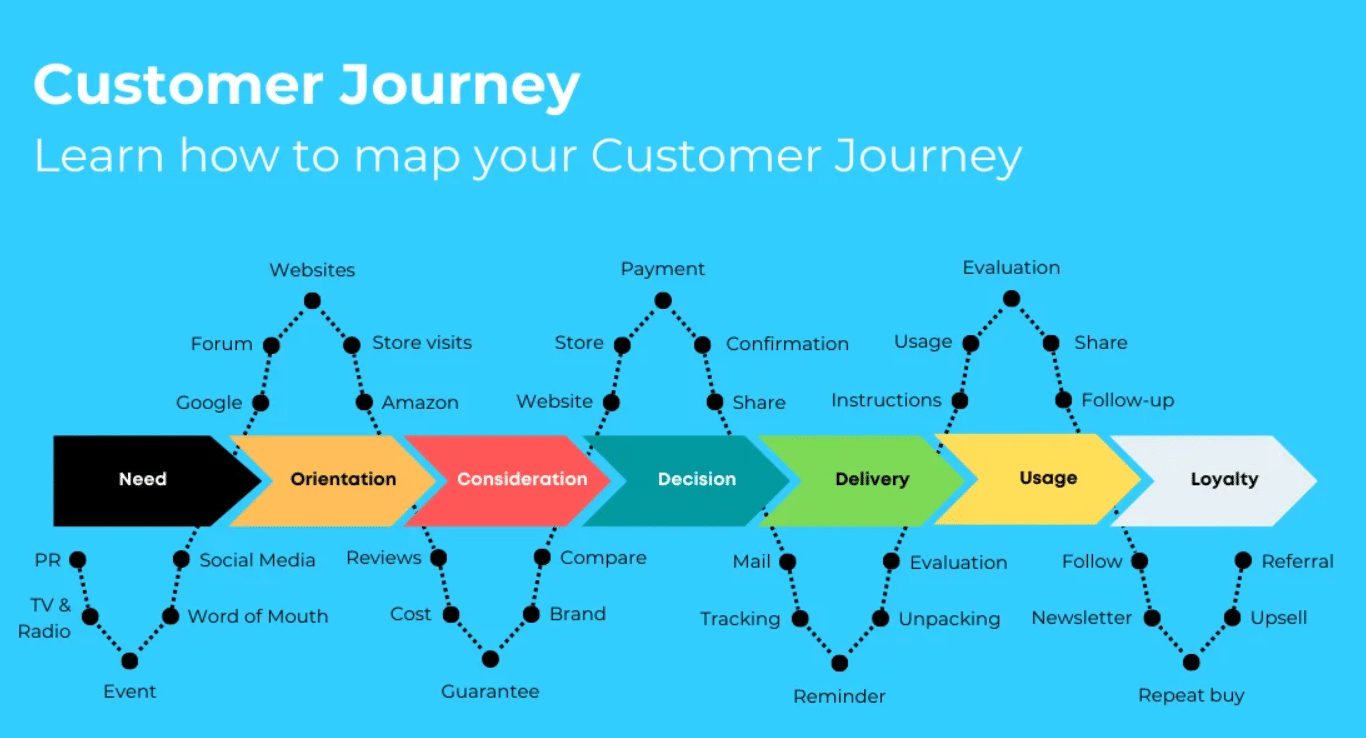Product Experience: How to Improve Overall User Engagement
The main goal of every product development is to create a user-friendly and accessible product. This never-ending process aims to give users an excellent product experience. Whether you’re the product manager or just a part of the product team, reaching customers’ expectations must be your top priority.
As product developers, we know how our product operates most. But despite this, our perspective is still limited, and therefore we can’t solely be responsible for the product’s success.
The users’ overall engagement should be the leading influence as your product matures. Using customer feedback as a blueprint for future updates and development is essential. This is where product experience comes to life.
But what does product experience really mean?
Table of Contents
Understanding product experience
Product experience refers to an existing customer’s overall insight when using a certain product. This includes their emotions, thoughts, and motives while utilising every feature. User experience is a huge part of the product experiences. Every time a user interacts with your product can be logged as an experience.

Source: dirkschart
Every insight your users have from using your product counts as product experience. Everything must be accounted for from when they login until they finish.
The goal of every business in existence is to provide customer satisfaction. However, product experience is often lost in the translation of user experience, causing it to be overlooked instead of taken advantage of.
Product Experience vs. User Experience
Both product experience and user experience measure how customers engage with a product. Even though most businesses confuse these two with each other, they’re not the same. Product experience focuses on general design and accessibility, while user experience mainly focuses on usability.
- Product experience – This weighs the customer’s general insight into the product: the landing page, web design, pop-up notifications, loading time, and log-in. While they’re logged in, everything your customers encounter is considered a product experience.
- User experience – refers to how customers engage and interact with the product’s core features. It focuses on the harmony within your product and how it affects customer engagement.
Importance of product experience
Product experience is one of the most important parts of the development process. A dull experience may cause users to dread using your product or, worse, quit it.
However, on a positive note, a successful product experience will increase usage and build customer loyalty and trust. Therefore, product developers must gather feedback about the quality of user engagement and take immediate action.
- Better user onboarding – Many companies lose potential customers because they lack proper user onboarding. You can improve user onboarding and engagement with a clear and straightforward product experience.
- Customer retention and loyalty – After user onboarding, it’s critical that your customers have a good experience. This will make them use your product for a long time. Improving product experience will also help you build trust with your customers, making them loyal to your brand.
- Improved Net Promoter Score (NPS) – NPS is a good indicator of a successful product experience. If your users have a good experience with your product, they will likely recommend you to a friend. This will help you improve your NPS and increase product exposure and sales.
- Sales and revenue – It goes without saying that gaining more customers will lead to more sales and eventually grow your business revenue.
Stages of the product lifecycle
To understand product experience further, product teams divide existing customers into different stages. These stages are based on where the customers are in their user journey.
#1. Onboarding
When new users have signed up, you can give them an overview of how the product works. Providing them with a clear and informative guide is important before the users churn. Onboarding is a critical stage, so it’s essential to solve and identify friction points at this stage before they are even raised.
#2. Product adoption
After onboarding, there’s still a possibility of losing new users, especially when they don’t see how your product can potentially benefit them. At this stage, your goal is to connect with new users and answer any questions they may have in mind.

Source: intercom
You can also offer to demonstrate how to set up their accounts and make the most out of your product. Designing in-app guides to help them throughout their journey will be as helpful.
#3. Customer retention
No matter what the nature of your product is, keeping your customers coming back for more must be one of your top priorities. Retained customers are going to be responsible for growing your revenue. They are also the ones who will potentially become product evangelists.
At this stage of the product experience lifecycle, you will want to convert your existing users into power users.
Power users are the type of users who takes advantage of your product’s full potential. They are the ones who use advanced features of your product that normal users are not familiar with.
#4. Turning users into product evangelists
Users who are loyal to your product and believe strongly about its benefits are called product evangelists. They are the users who recommend your product to their friends because they believe it to be excellent.
Turning your users into product evangelists is the hardest part of the product experience lifecycle. To do this, always aim to develop the ideal product that exceeds your customer’s expectations. You can also connect with your users and engage across all your platforms.
#5. Customer feedback
As a product manager, remember that your product development process should constantly evolve. Product development should start by building around what you think your customers want. But as you gather feedback, the process can evolve to developing features that your users request.
Here are some ways you can involve your customers with the product development process:
- Create a product roadmap where your customers can pick which feature they want to be developed first
- Customer surveys to rate customer satisfaction and collect suggestions
- One-on-one customer interviews
No product is developed perfectly on one try. All products are perfected through constant development and updates. You can only retain the loyalty of your users if you are committed to improving their product experience.
Ways to improve the product experience
Knowing exactly what product experience means is only the first step of the process. The next thing you need to know is how to improve it. Here are nine effective ways to improve the product experience and use it for customer success:
#1. Set clear goals and objectives
A clear view of your goals and objectives is the first step in improving product experience. This will help you determine whether your customers love your product’s new features or not. You can also identify anything your product needs to change or update.
Setting goals and objectives lets your customer success team see the general picture and understand how new users interact with your product. You can provide insight into the overall customer journey and how they engage with the product. This will let you point out all the possible issues in the future and address them accordingly.
Understanding customer lifecycle will help you predict product experience and try different approaches to improve conversion and retention.
#2. Design a creative and enjoyable user onboarding process
Extensive knowledge about a certain product plays a major role in the overall product experience. With this in mind, providing an innovative and enjoyable onboarding process for new users is important.
To have a successful onboarding process, you must capture your audience’s attention immediately, making them eager to start. The next step is to keep them engaged enough to realise how your product will help them.
There are many strategies for levelling up your user onboarding process. You can use videos, pop-ups, or gamification software to capture the attention of your new customers.
Using Gamification to boost product experience
Imagine being in the dashboard of a product with zero tutorials whatsoever. Won’t you feel lost and confused using a product that has no engagement at all?
That’s where gamification comes in.
Gamification is the process of incorporating game-like features into your systems. This strategy will increase user engagement and, eventually, the product experience.
Creating an effective product that your users can enjoy is the backbone of an excellent product experience.
User onboarding gamification is a strategy to create an exciting environment for users exploring a product. It’s a process where users are given a set of challenges to accomplish to move forward.
Some businesses use rewards and incentives like badges to encourage progress. This will help them learn more about your product while enjoying it. Talk about hitting two birds with one stone.

Source: staffbase
With gamification, you can create levels of challenges and a reward system. You can associate coins for each task they complete or create a checklist that shows their onboarding progress. This way, they can see what they have accomplished and what is in store.
Take a look at this example. This checklist monitors the progress of new users and tells them how far they still have to go. You can apply a similar approach in displaying the accomplishment of your users.

Source: userpilot
Once the users have accomplished all onboarding tasks, they can earn badges or other rewards for recognition. Seeing their progress and earning rewards will make their onboarding experience memorable.
#3. Gather customer feedback
Developing your products with your knowledge alone is insufficient to reach the optimum product experience. Assuming that your monitoring systems are effective, you still need to ensure that you use every piece of information to your advantage.
Gathering product feedback might already be an existing process within your business. However, it is also as important to take those feedback and use it to boost product experience potentially. Knowing what your customers want and what features they request frequently will help you determine what makes them satisfied with your product.
Letting your customers tell you their preferences will improve overall customer experience in the long run.
#4. Prioritise product analytics
Product analytics is analysing your product and how your users interact with it. It lets your support team track and visualise user behaviour and overall customer experience.
With this strategy, you can identify areas within your product with issues and features needing updating. Product analytics is the perfect tool for diagnosing problems hindering you from reaching optimal product experience.
#5. Provide product update information
Once you gain new customers to use your product, you must constantly provide them with updated information. The key to providing product information is to be consistent with what the expectations you set and what your users will experience.
Failing to meet the standard you have set for your product will harm your brand. Product information must be consistent, personal, and true to user expectations.
Here are some of the best ways you can provide product update information:
- Provide current and optimised data throughout all platforms
- Make sure that the information you send is proofread and above reproach. If there are any mistakes in the information you sent, address them immediately and make appropriate fixes.
- Emphasise the most important and relevant information your users will find helpful.
You must deliver information about new features and product updates promptly and accurately so your customers will instantly know about it. Understanding how to make the most out of a product is the best product experience you can provide.
#6. Build a consistent product design
As mentioned before, consistency is the key to a successful product experience. That’s why you must plan to build consistent brand and product design across all platforms. Understand the customer journey through your landing pages, log-ins, and overall product design.

Source: gustdebacker
A reliable design pattern will build customers’ trust and make product marketing easier.
#7. Prioritise customer complaints
Aside from gathering positive product feedback, customer success teams must also prioritise attending to customer complaints. Indeed, hundreds of complaints come in every day. But it’s important to recognise high-impact opportunities that can be used for product development.
Not only will prioritising customer complaints keep their product experience high, but it will also improve the experience of your users experiencing the same issue.
#8. Build trust
Customer trust is the stepping stone to achieving customer loyalty and business success. To earn it, you must understand the customer journey and provide a relevant and personalised experience for them.
You can build trust with your customers by:
- Focusing on excellent customer service – Customer support and product teams can build trust with users by setting a high standard for customer service. Provide a unique product experience for your users through personalised customer service.
- Connecting with your customers – Treating your customers like family goes a long way. To do this, you must connect with them frequently through your platforms. Once you become approachable and reliable, your users will trust your brand and the products you develop.
- Being transparent – Being upfront with how you handle your customers’ data and how it will be protected makes them feel confident in trusting you. Clarifying how you intend to use their information upon first contact is essential.
Don’t wait until your reputation is damaged before starting to build trust. Start by understanding your users and continue to build relationships with them as they go through the customer lifecycle.
#9. Always find new ways to improve the product experience
This last tip for improving product experience is the most basic but often overlooked. Most digital businesses fail because they quit finding ways to improve the product experience constantly.

Source: logrocket
Product managers and product teams must watch all the product-related content. May it be within the landing page or onboarding dashboard, no product-related content must be overlooked
Consistently finding new ways to improve product experience should be a huge part of the product development. If your customers don’t have a good experience with your product, they might find new solutions to their problems elsewhere.
Conclusion
Product managers should constantly ask themselves what they want their users to go through when using their products. Do you want them to be disappointed with their experience, or do you want them to have a blast?
Product experience is the connection between your product and your customer. If you prioritise improving your products, you also prioritise providing a quality experience to your customers.
If you focus on creating an excellent product experience for your users, you’re on your way to developing top-notch products that old and new users will love. Constantly developing the best version of your product will result in living up to your customer’s expectations. And as a result, you will successfully build trust and loyalty with them.
All in all, product experience and user experience are co-dependent on each other. All you have to do is set clear objectives, develop excellent products, and listen to what your customers will have to say.
Our experts at Mambo are determined to help you provide a more interactive product experience to make your users’ overall experience more engaging and enjoyable. Contact us now!
Download your free
“Gamification Guide”
Get your PDF now and start transforming your approach to digital engagement!
Latest Posts
Machine Learning In Finance: 12 Essential Applications
The impact of machine learning on finance is significant. Thanks to this technology, financial institutions are now equipped to make efficient decisions. Through the analysis of data sets, machine learning […]
How To Create Interactive Compliance Training For Bank Employees
Banking compliance training isn’t just another task. It’s the stage where everything else performs. Banks must navigate a myriad of regulations and laws. After all, this is a trust-driven, high-stakes […]
How Fintech Apps Are Using Gamification To Increase User Engagement
Discover how gamification in fintech is revolutionizing financial engagement, making banking fun & boosting user loyalty.





